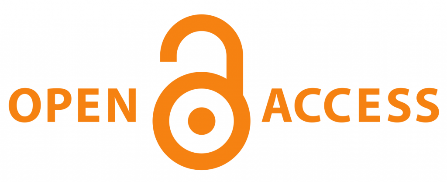Equidad y gasto público en América Latina. Una aproximación empírica
Equity and Public Expenditure in Latin America. An empirical approach
DOI:
https://doi.org/10.59773/ci.v6i2.91Palabras clave:
Desigualdad, pobreza, gasto público, educación, saludResumen
El objetivo es establecer la relación entre el aumento en el gasto público total y social y la reducción de la pobreza y la desigualdad de renta en América Latina. Para el efecto, se estima un modelo de datos de panel para 17 países de América Latina desde 1990 a 2019, con el índice de Gini y distintos indicadores de pobreza como variables dependientes, que están en función del gasto público total y del gasto público en salud y educación del gobierno general. Se incorpora además el PIB per cápita y otras variables de control. Los resultados demuestran que el gasto público tiene un potencial significativo como herramienta redistributiva en América Latina, pero su efectividad depende de cómo se focalicen e implementen los recursos. El gasto público en salud destaca como mecanismo eficiente para reducir tanto la desigualdad como la pobreza, en tanto que el gasto público en educación muestra efectos menos evidentes.
Citas
Acemoglu, D., & Robinson, J. A. (2005). Economic origins of dictatorship and democracy. Cambridge university press.
Abramo, L., Cecchini, S., & Ullmann, H. (2020). Enfrentar las desigualdades en salud en América Latina: El rol de la protección social. Ciência & Saúde Coletiva, 25(5), 1587-1598. https://www.scielosp.org/pdf/csc/v25n5/1413-8123-csc-25-05-1587.pdf
Aghion, P., & Bolton, P. (1997). A theory of trickle-down growth and development. The review of economic studies, 64(2), 151-172. https://academic.oup.com/restud/article-abstract/64/2/151/1580865
Anyanwu, J. C., & Erhijakpor, A. E. O. (2009). Health Expenditures and Health Outcomes in Africa. African Development Review, 21(2), 400-433. https://doi.org/10.1111/j.1467-8268.2009.00215.x
Baldacci, E., Clements, B., Gupta, S., & Cui, Q. (2008). Social spending, human capital, and growth in developing countries. World development, 36(8), 1317-1341. https://www.sciencedirect.com/science/article/pii/S0305750X0800065X
Baldacci, E., Guin‐Siu, M. T., & Mello, L. D. (2003). More on the effectiveness of public spending on health care and education: A covariance structure model. Journal of International Development, 15(6), 709-725. https://doi.org/10.1002/jid.1025
Banco Mundial (2018). Learning to Realize Education’s Promise. World Bank. https://www.worldbank.org/en/publication/wdr2018
Banco Mundial. (2020). Poverty and shared prosperity 2020: Reversals of fortune. The World Bank.
Becker, G. S. (2009). Human capital: A theoretical and empirical analysis, with special reference to education. University of Chicago press.
Berg, A. G., & Ostry, J. D. (2017). Inequality and Unsustainable Growth: Two Sides of the Same Coin? IMF Economic Review, 65(4), 792-815. https://doi.org/10.1057/s41308-017-0030-8
Bloom, D. E., Canning, D., & Sevilla, J. (2004). The effect of health on economic growth: A production function approach. World development, 32(1), 1-13. https://www.sciencedirect.com/science/article/pii/S0305750X03001943
Boix, C. (2003). Democracy and redistribution. Cambridge University Press.
Card, D. (1999). The Causal Effect of Education on Earnings. Handbook of labor economics. Elsevier.
CEPAL (2013). Panorama Social de América Latina 2012. Comisión Económica para América Latina y el Caribe. https://www.cepal.org/es/publicaciones/1247-panorama-social-america-latina-2012
CEPAL (2019). Panorama Social de América Latina 2019. Comisión Económica para América Latina y el Caribe. https://www.cepal.org/es/publicaciones/44969-panorama-social-america-latina-2019
Clifton, J., Díaz-Fuentes, D., & Revuelta, J. (2020). Falling Inequality in Latin America: The Role of Fiscal Policy. Journal of Latin American Studies, 52(2), 317-341. https://doi.org/10.1017/S0022216X20000334
Coppedge, M. et al. (2024), “V-Dem [Country-Year/Country-Date] Dataset v14”, Varieties of Democracy (V-Dem) Project. https://doi.org/10.23696/mcwt-fr58.
Cornia, G. A. (2014). Inequality trends and their determinants: Latin America over the period 1990-2010. Falling inequality in Latin America: policy changes and lessons, 24-49.
Cruces, G., & Gasparini, L. (2008). A distribution in motion: The case of Argentina. Documento de Trabajo. https://www.econstor.eu/handle/10419/127594
Devarajan, S., Swaroop, V., & Zou, H. (1996). The composition of public expenditure and economic growth. Journal of monetary economics, 37(2), 313-344. https://www.sciencedirect.com/science/article/pii/S0304393296900392
Fiszbein, A., & Schady, N. R. (2009). Conditional cash transfers: Reducing present and future poverty. World Bank Publications.
Gómez, J., & Morán, D. (2012). Informalidad y tributación en América Latina: Explorando los nexos para mejorar la equidad. https://repositorio.cepal.org/handle/11362/5356
Gupta, M. S., Tiongson, M. E., & Verhoeven, M. (1999). Does higher government spending buy better results in education and health care? International Monetary Fund.
Haggard, S. (2020). Development, democracy, and welfare states: Latin America, East Asia, and eastern Europe. https://www.torrossa.com/gs/resourceProxy?an=5641709&publisher=FZO137
Hanni, M., Martner Fanta, R., & Podestá, A. (2015). The redistributive potential of taxation in Latin America. https://repositorio.cepal.org/handle/11362/39603
Kuznets, S. (1955) Economic Growth and Income Inequality. The American Economic Review, 45(1), 1-28.
Lo Franco, R., Compagno, G., Messina, A., & Napoli, A. (2005). Bell’s inequality violation for entangled generalized Bernoulli states in two spatially separate cavities. Physical Review A, 72(5), 053806. https://doi.org/10.1103/PhysRevA.72.053806
Lustig, N. (2014). Income Redistribution and Poverty Reduction in Latin America: The role of social spending and taxation in achieving development goals. Development, 57(3-4), 388-399. https://doi.org/10.1057/dev.2015.4
Lustig, N., Pessino, C., Scott, J., Lustig, N., Pessino, C., & Scott, J. (2014). Analyzing the redistributive impact of taxes and transfers in Latin America. special issue, Public Finance Review, 42(3), 287-303.
Musgrave, R. A. (1996). The role of the state in fiscal theory. International Tax and Public Finance, 3(3), 247-258. https://doi.org/10.1007/BF00418943
Nixon, J., & Ulmann, P. (2006). The relationship between health care expenditure and health outcomes: Evidence and caveats for a causal link. The European Journal of Health Economics, 7(1), 7-18. https://doi.org/10.1007/s10198-005-0336-8
Noël, A. (2019). The politics of minimum income protection in OECD countries. Journal of Social Policy, 48(2), 227-247.
Perrotti, D. E., & Sánchez, R. (2011). La brecha de infraestructura en América Latina y el Caribe. https://repositorio.cepal.org/handle/11362/6357
Pessino, C., & Alaimo, V. (2018). The Impact of Public Spending on Equity: Not Always as Intended. Inter-American Development Bank. https://publications.iadb.org/publications/english/document/DIA-2018-Chapter-4-Impact-public-spending-equity.pdf
Psacharopoulos, G., & Patrinos, H. A. (2004). Returns to investment in education: A further update. Education Economics, 12(2), 111-134. https://doi.org/10.1080/0964529042000239140
Sen A. K. (2000): Desarrollo y Libertad. Editorial Planeta S.A. Barcelona.
Servén, L., & Calderón, C. (2004). The effects of infrastructure development on growth and income distribution. Documentos de Trabajo (Banco Central de Chile), 270, 1-47.
Soares, F. V., Ribas, R. P., & Osório, R. G. (2010). Evaluating the impact of Brazil’s Bolsa Familia: Cash transfer programs in comparative perspective. Latin American research review, 45(2), 173-190.

Descargas
Publicado
Cómo citar
Número
Sección
Categorías
Licencia

Esta obra está bajo una licencia internacional Creative Commons Atribución-NoComercial-CompartirIgual 4.0.






